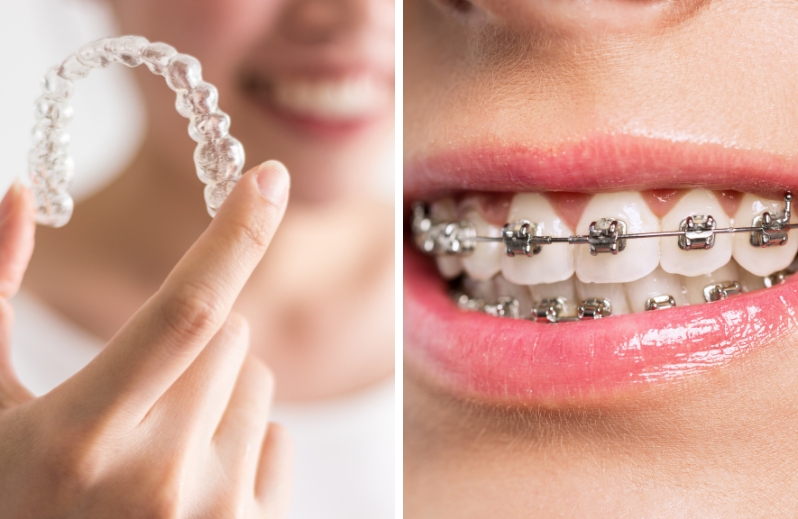Pain Comparison in Orthodontics: Is Invisalign the Smoother Ride Over Braces?

Which stings more—metal braces or Invisalign? The answer will surprise you. Everyone tells us Invisalign is kind. However, is it really pain-free?
Braces contain wires. On the other hand, clear aligners is stylish. However, pain lies in unexpected spots.
The selection of Invisalign isn’t all about style. It’s also about comfort. People believe all orthodontic solutions are the same. That’s a myth. Invisalign could be the smoother ride—let’s see why.
Understanding the Basics
Old-school braces employ metal brackets and wires to move teeth into the proper position over time. A dentist bonds brackets onto the teeth and links them up with wires. These wires get tightened periodically and move the teeth slowly into position.
The ongoing stress of braces repositions the bite, but may be painful. Invisalign utilizes transparent plastic tray. They are molded to your teeth, though. These aligners are removable and almost invisible. You will get no wires or metal.
Each one is worn for roughly two weeks before changing to the next. A dentist oversees the progress and dispenses new aligners during check-ups. Invisalign Spokane Valley is a discreet, flexible way to approach orthodontics. It’s known for comfort, convenience, and better looks.
The Nature of Pain in Orthodontic Treatment
Orthodontic pain occurs when teeth move, and the jaw adjusts. Both braces and Invisalign put pressure on teeth. This results in temporary soreness and inflammation.
Irritation is common with braces, and it is caused by the brackets rubbing against the cheeks. Clear aligners will initially feel tight. However, sharp pain is unlikely
Discomfort may appear as dull pressure, sore jaws, or sensitivity in the gums. Some have headaches because their jaw moves and muscles tense.
Mouth sores from braces are the norm. Invisalign patients do not generally experience this. Pain also has an emotional component—ongoing sensitivity to pain impacts mood.
Open communication with your dentist can help you cope with these feelings. Pain is a part of improvement. However, what it feels like to you is what counts.
Pain Timeline: Braces vs. Invisalign
Initial Placement
Braces are likely to cause more acute pain on initial placement. Metal pieces scrape against soft tissue and lead to sores and pain.
On the other hand, Invisalign feels snug but is generally gentler when first worn. Most users describe Invisalign’s start as “tight” but tolerable.
Adjustment Periods
Braces need regular tightening. They often lead to intense soreness for days. Dentists manually adjust wires. This increases pressure on specific teeth.
Invisalign users switch trays every 1–2 weeks and create mild, consistent pressure. The adjustment is smoother, with less dramatic pain spikes. Pain with Invisalign typically fades within 24–48 hours after switching trays.
Depending on the adjustment, braces have the ability to produce constant pain following each appointment. Eating following braces adjustments can also be quite uncomfortable.
Long-Term Experience
Braces are capable of potentially producing regular mouth ulcers from sharp metal ends. Many patients commonly use wax and salt rinses to cope with irritation.
Invisalign is smooth, with minimal contact with cheeks or gums. Most Invisalign users experience less long-term pain and quicker recovery.
In addition, eating with Invisalign is pain-free, as trays are removable. Braces restrict food choices and can be painful while chewing. In general, Invisalign is significant in providing a more consistent and controllable pain experience.
Braces tend to be more painful, particularly when they’re adjusted. However, each mouth is different. Our dentist knows what’s best. If comfort is your priority, Invisalign is probably your smoother orthodontic ride.


